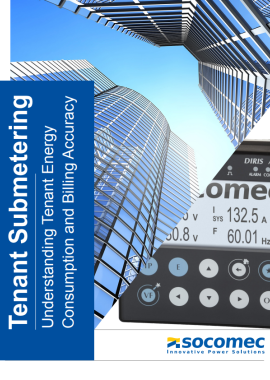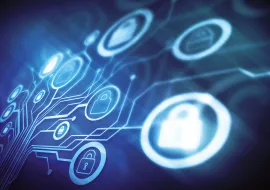The traditional approach is for a single meter that monitors the power consumption of multiple rental units. Tenants then share cost for energy consumption based on the rental square-footage they occupy.
Traditional energy metering lacks transparency, which impairs accountability when multiple parties must share the bill. It means that tenants have no incentive to conserve energy and reduce waste and it undermines sustainability initiatives. The following five tips outline how you can use tenant metering to bill costs for your multi-tenant buildings more accurately.
1. Upgrade Tenant Metering for Better Tenant Billing
Install energy meters for each electrical distribution panel that feeds power to your rental units. Retrofitting your energy meters is an opportunity to introduce modern practices that improve data collection and profitability. Obsolete metering methods lead to excessive consumption and apathy among tenants. They conceal the most extravagant users and offer no incentive for any occupants to moderate their use.
Replacing outdated power monitoring systems with energy meters that can attribute consumption more accurately changes the dynamic and nudges energy users toward better behavior. It is the perfect opportunity to introduce modern practices that improve profitability. While investing in new tenant metering increases profitability for rental units, it also reduces the number of tenant complaints relating to energy billing.
2. Match Energy Billing to Usage with Tenant Submetering
Tenant submetering facilitates direct measurement and recording of the energy consumed in each rental space. It measures consumption at the critical points within the electrical systems of each unit. Submetering captures energy data at critical points to diagnose consumption factors. It provides valuable information about the unique requirements of each tenant.
Most importantly, you can bill tenants’ usage based on real data, itemizing energy usage, which helps them identify internal waste and reduce their consumption. Tenant billing that provides a breakdown by service builds goodwill with occupants and helps them facilitate savings, accountability, and transparency. Unit occupiers can analyze how they use services such as lighting, HVAC, and computing so that they can optimize their operations for better energy efficiency.
3. Centralize Data Communication for Transparent Billing
As the individual meters collect consumption data, they communicate it to a central server, which produces detailed bills and distribute them to the tenants. The overview of all consumption with breakdowns to the level of tenant submeters brings a new level of transparency and accountability to how both facilities managers and tenants think about energy consumption.
4. Use Tenant Billing that Provides Insight Into Consumption Patterns
The ability to make savings motivates your tenants to act. It is the ability to make accurate determinations that offer new opportunities to find waste and therefore savings. Each small individual improvement contributes to collective sustainability and helps buildings achieve green initiative targets. Since more accurate tenant billing increases trust, it can deliver the added benefit of minimizing tenant energy billing disputes.
5. Validate with Green Building Certification
Earn a green building certification such as a Leadership in Energy and Environmental Design (LEED) certification. Modernized power metering is a LEED certification requirement, and it demonstrates that a building’s operations conform to best practices.
Achieving a green building certification puts you in a framework for energy management efficiency. It sets the standards for sustainability and provides the benchmarks on which to base your tenant energy billing policies. The ultimate benefits to building owners and managers are the improvements in profitability and the quality of tenants that it will attract.
Start with Submetering Today
Modern commercial buildings and facilities have many different systems that demand energy. To achieve the best tenant billing process, you can match power monitoring to each tenant’s unit with submetering. You will gain deep insight into energy consumption habits and reveal the potential for sustainability and, ultimately, building zero.
The minimal cost of installing tenant submetering will bring savings that continue to grow over time. A few hundred dollars can deliver thousands in savings every year, indefinitely into the future. Tenant billing that explains costs based on submetering data helps to create savings and goodwill by facilitating accountability and transparency.
Want to learn more about power monitoring and how it can help your building become more energy efficient? Download your free whitepaper, Energy Efficiency & Power Monitoring: The Need of the Day to learn how submetering can help you and your tenants make smarter energy decisions.






